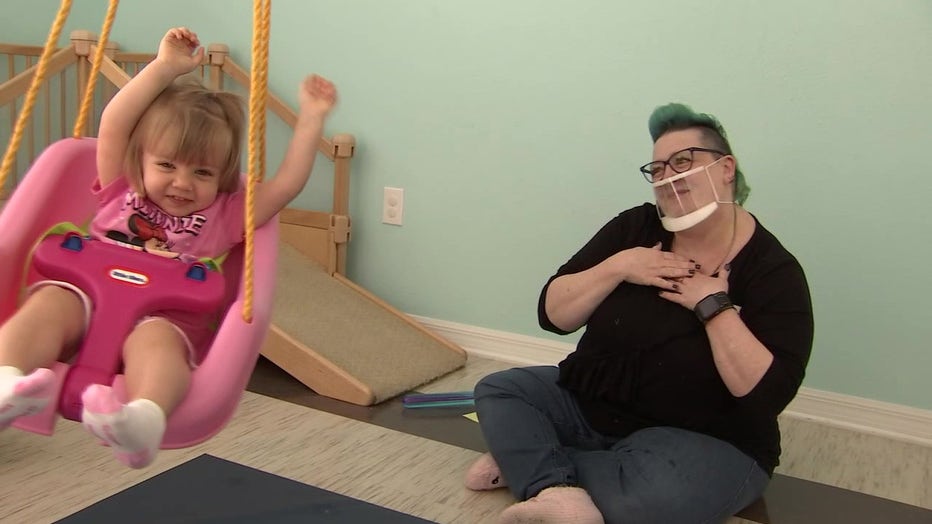Expert: Transparent masks make clear difference for special-needs kids
WESLEY CHAPEL, Fla. - Faith Rust hasn’t had the easiest time during her four years of life. She had meningitis when she was 3 weeks old and has had developmental problems ever since.
Her mother, Amanda Rust, takes her to Communication Corner and More for in-person speech and occupational therapy, which is tougher during a pandemic.
“We tried online, but Faith would not sit still in front of the computer no matter what we tried,” Rust explained. "I am here to get her ready for school, ready for the outside world where there’s not Mommy there to protect her all the time. She has a very difficult time transitioning."
Jill Vought, a speech-language pathologist and owner of Communication Corner and More, says facial expressions are very important during therapy. It is crucial for the staff to have clear facemasks during their therapy sessions.

“As a therapist, it provides for us the ability to give visual placement cues, sound cues, and our sounds are no longer muffled under a mask that’s cloth.”
“Facial expressions during therapy are huge, especially for Faith,” Amanda Rust agreed. “That’s how she reads people. Not only that, that’s how you can read her. So the fact that they are using these clear shields so that my kid can see a smile when she does something right, or a grin, it doesn’t even have to be a full smile. Or when they’re disappointed and she’s not following directions, she needs to be able to read that: ‘Hey, that probably wasn’t the right thing.’ But if your covering the face, then they can’t read that.”

Vought feels the kids would not be as successful without all of the tools they have implemented.
“If we didn’t have the clear barrier and we didn’t have a clear mask of some sort to provide those prompting cues and that visual enhancement of communication, I don’t think the kids would be making the progress without that. Your eyes show a lot of emotion, but the smile does it all.”


